Put Copper Pennies In Your Bird Bath: How To Clean A Bird Bath With This Simple Hack, And Why It Can Help Your Bird Garden
Knowing how to clean a bird bath is crucial all year long, so If you haven’t tried this cheap and cheerful cleaning hack, it’s time to put that copper penny in your pocket to good use
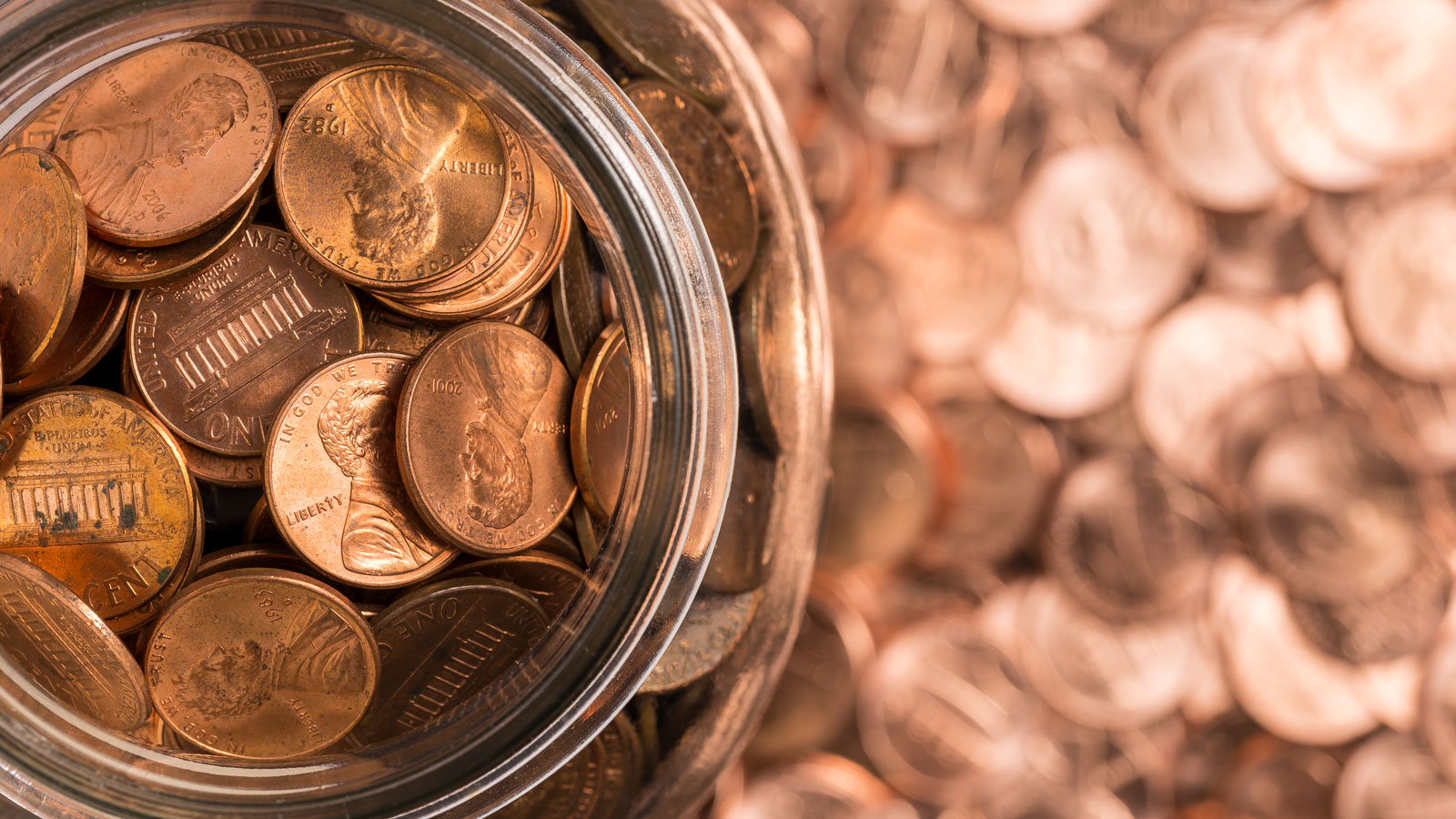

Watching birds splish-sploshing in a clean bird bath has to be one of the all-time garden pleasures. But if that splishing and sploshing has been less of a feature around your bird bath of late, the reason could be right under your nose. Knowing how to clean a bird bath isn’t always top of our list of priorities in the garden, especially in the height of growing season when there are so many other jobs demanding our attention. But for time-poor gardeners, perhaps this little bird bath hack could help get birds flocking to your yard again?
If you’ve got a couple of copper pennies loitering in the recesses of your wallet or back pocket, it’s time to give them a new lease of life, as we reveal one of the cheapest and easiest ways to keep your bird bath clean so you can attract more birds to your garden.
Why put a Penny in Your Bird Bath?
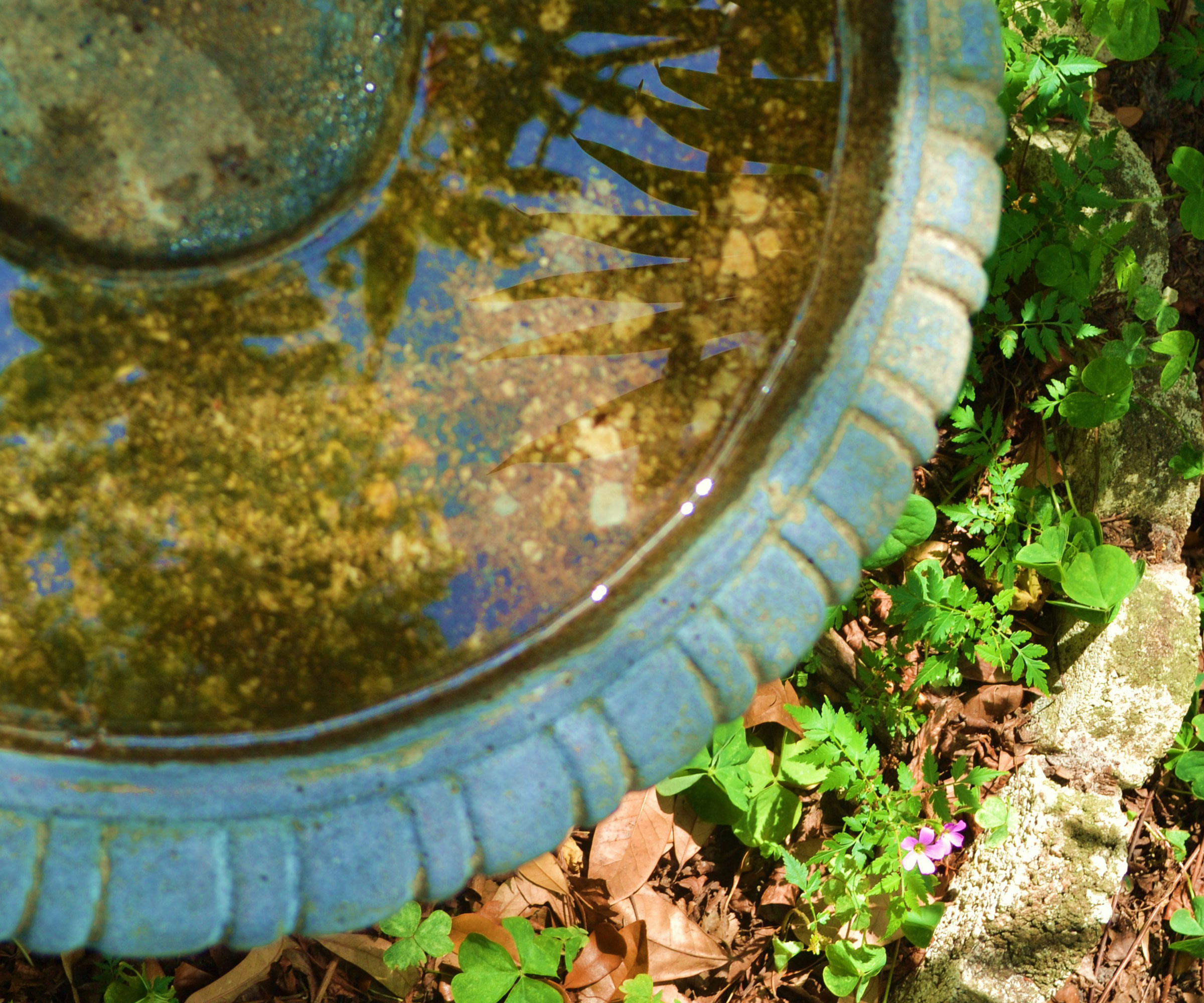
If you have owned a bird bath for more than a few weeks, you’ve probably already noticed the single most unwelcome visitor – that green, slimy substance that seems to grow out of nowhere. This substance is algae, and it doesn’t need much encouragement to get a foothold. Leave it unchecked for even a little while, and before you know it the water will have turned murky, opaque and generally quite unpleasant. If birds aren’t visiting your bird bath and you spot this substance in there, it’s time to act.
Algae can quickly grow on a variety of garden surfaces, ranging from garden benches and damp paving slabs to the surfaces of container potting mixes. If you don’t like the way it looks or feels, imagine how a bird might feel! But why do pennies prevent algae building up in a bird bath?
To put the science simply, the presence of a copper penny disrupts conditions that would make algae more likely to develop and thrive. The copper ions in pennies leach into the water and create a chemical barrier that prevents algae building up. Algae relies on photosynthesis to thrive, and copper renders algal membranes weaker – to the point where they collapse and fail.
If you want to know how to clean a cement bird bath or metal-based equivalent, this little penny hack could make a big difference to a wider cleaning routine. You don’t have to put that many pennies into the bird bath to make an impact. Just one or two can give water a little extra clout in keeping algae levels low. So if you’re looking for an inexpensive way to clean a bird bath, this is certainly one worth considering.
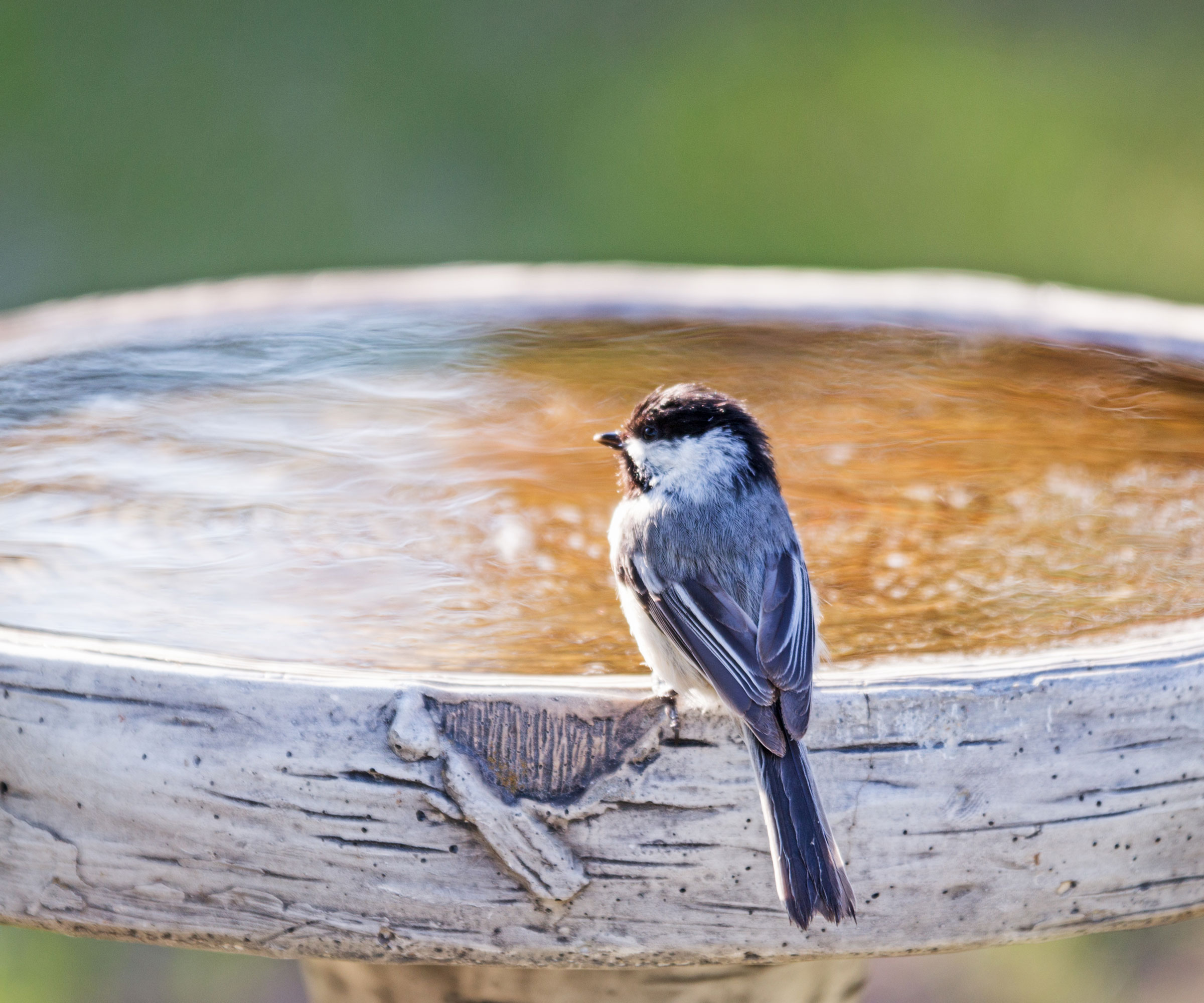
Can You Use Any Coins in Your Bird Bath?
This part is important – you can’t just throw any old pennies in a bird bath and expect to see fantastic results, nor can you be sure they are safe to add. The time stamp on your penny is crucial in helping to determine whether your loose change could be beneficial. What you are looking for are coins that were minted before 1982. This is because pre-1982 pennies are predominantly copper based (95% copper to 5% zinc).
Don’t make the mistake of grabbing pennies minted after 1982, as these coins are mostly zinc. Copper was becoming a more expensive element at this time. Still, if you do have a few pre-1982 pennies in your hands, you’re about to find out how precious copper could be right now in your bird bath. For anyone keen to know how to keep bird baths clean, placing copper pennies in a bird bath is a clever way to deploy an everyday element to weaken algae and curb the spread of algal bloom.
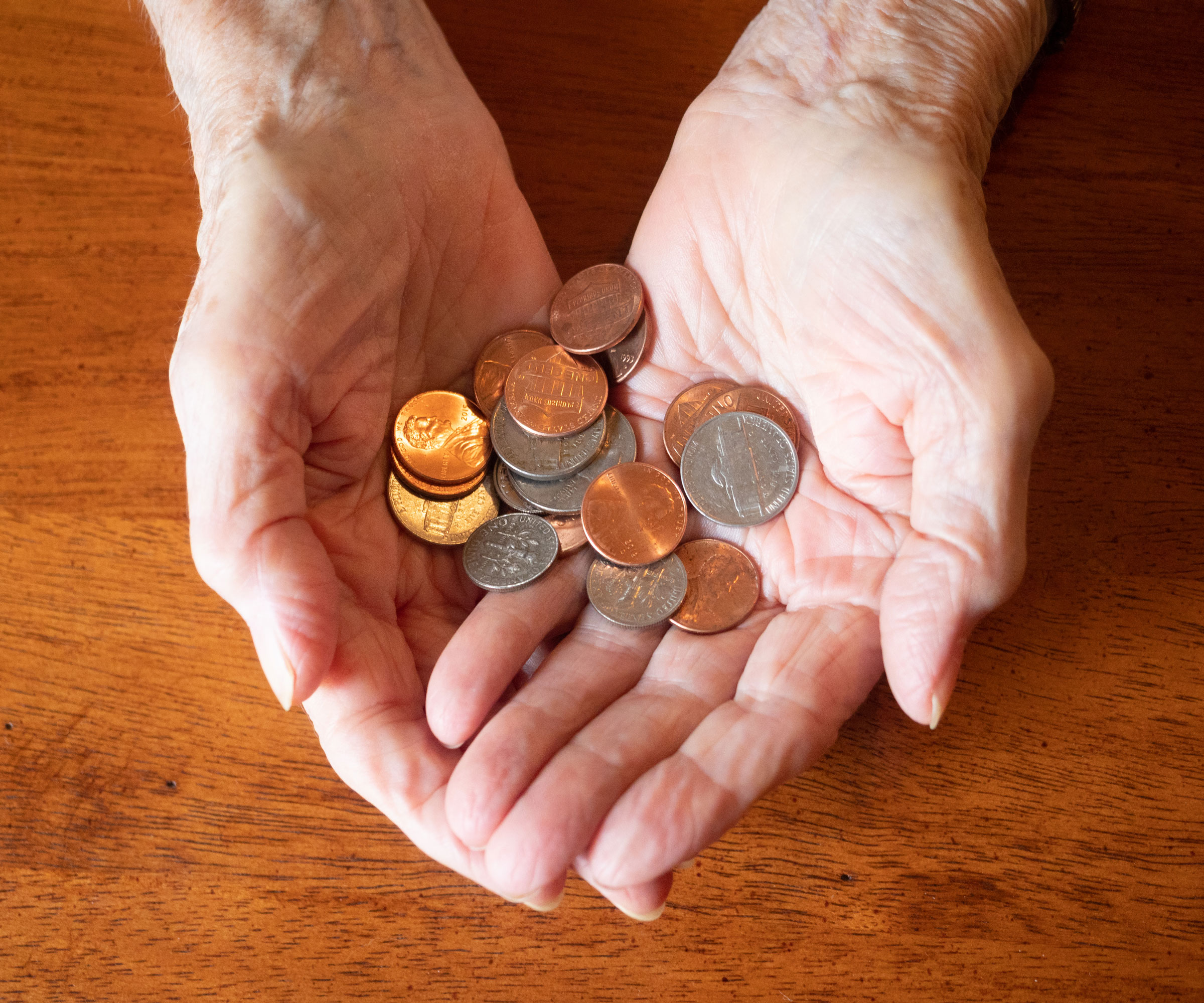
Do You Have to Clean Your Penny?
It’s definitely a good idea to clean your copper pennies before dropping them in your bird bath. This is equally true, whether you need to know how to clean a concrete bird bath or a metal-based alternative. Introducing any form of foreign body into a bird’s cleaning and drinking water is a responsibility – and if that foreign body is dirty, it’s just inviting trouble in the form of toxins, germs, or worse.
If you have some white vinegar in your kitchen cupboard, cleaning your pennies is really easy. And if you don’t have any, you can pick up some good white vinegar deals at Amazon. Just mix a little white vinegar, salt and lemon juice, and brush the penny with an old toothbrush. Alternatively, you can use lemon juice with a little baking soda. Once you have brushed away the obvious dirt and it looks relatively shiny, wash your pennies thoroughly and leave to dry. Only add your penny to the bird bath if you see a decent shine on the surface after cleaning.
Once your copper pennies are dry and clean, you can drop them into the bird bath. Make sure you have cleaned the bird bath and replaced the water before you do this. Don’t expect dramatic results – but the copper in the pennies will build in the water and start weakening trace elements of existing and emerging algae within days. It should prevent further buildup well before you need to clean the bath again, and will help to keep the water much clearer between cleanings.
Are There Any Risks to Having Pennies in a Bird Bath?
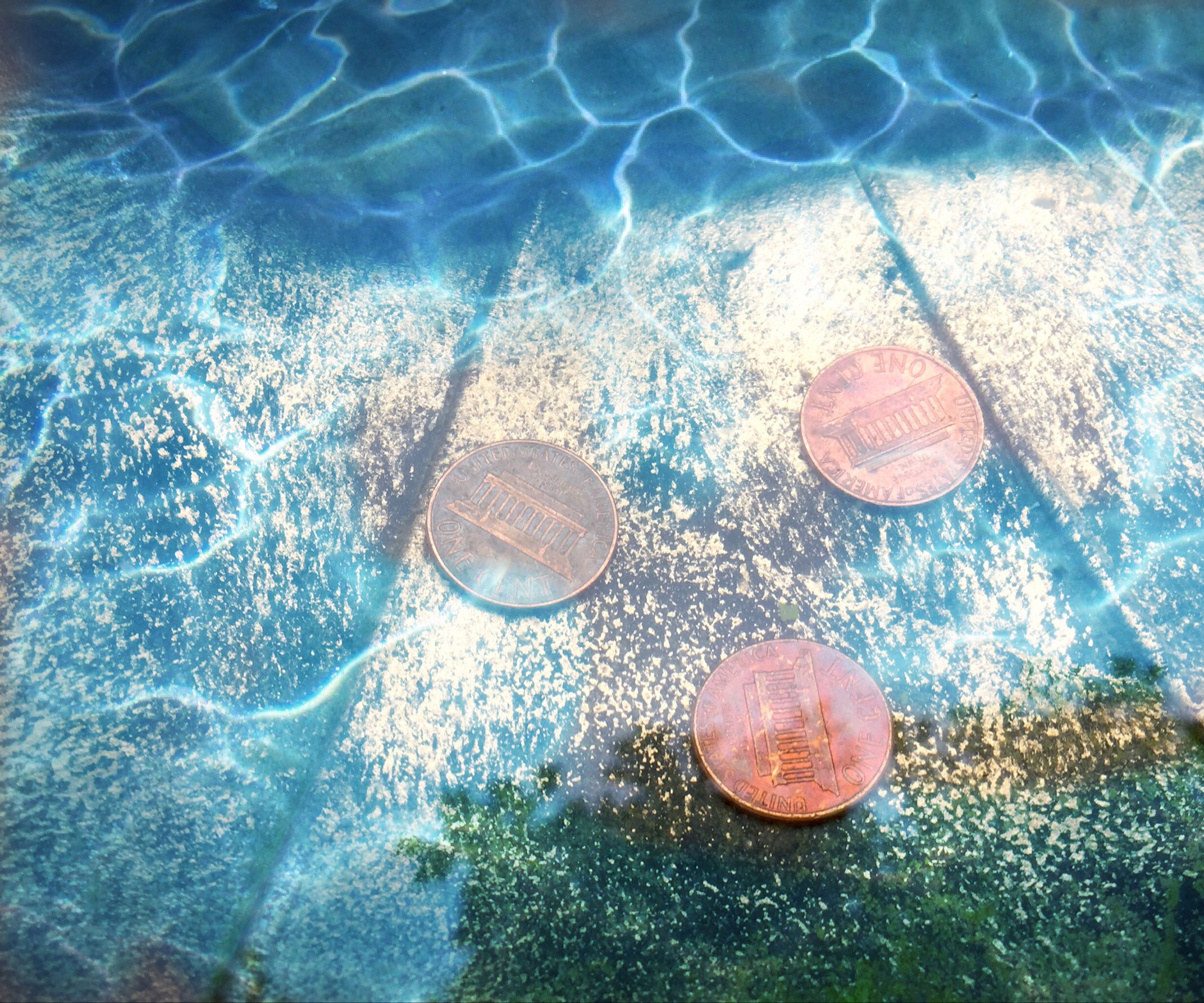
The great thing about this penny hack is that it is relatively safe. For anyone wanting to know how to keep a bird bath clean, it’s both very cheap and remarkably effective. However, there are a couple of caveats. You should make sure your pennies are definitely those that were minted before 1982. Using pennies made after 1982, you are introducing unnaturally high levels of zinc into the water supply for birds, which can be toxic if ingested in large quantities.
You should also make sure you have prepped and cleaned your pennies before introducing them into the bird bath. Unclean pennies are a haven for germs, which can be just as risky for birds to swallow as they would be for humans. It’s important to check for any signs of rust and safeguard against rust being dipped into the water, as small garden birds like songbirds are especially sensitive to chemical imbalances in water.
You might be worried about the possibility of heavy metal poisoning such as copper toxicosis. This can happen where birds ingest excessive amounts of copper. However, this would need to be happening over a long period of time, where the water was not being regularly replaced. As long as you are ensuring that the water is kept clean every week, there are no known scientific risks to adding copper pennies to reduce algae levels.
Sign up for the Gardening Know How newsletter today and receive a free copy of our e-book "How to Grow Delicious Tomatoes".
Taking Care of Your Bird Baths
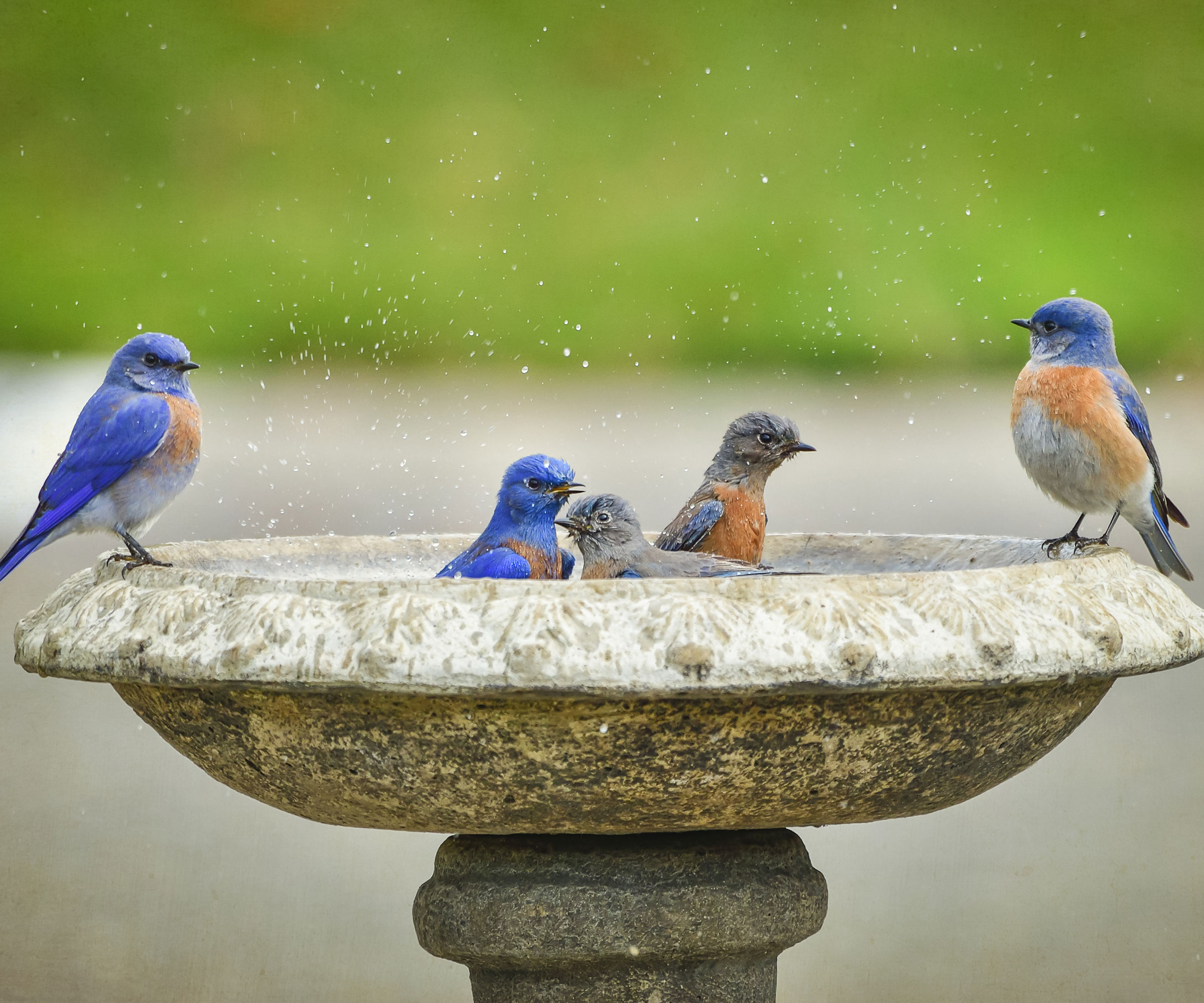
While this is a useful hack, it shouldn’t be the only thing you do to keep your bird baths clean. This isn’t one of those hacks that covers off every eventuality – nor should it be something you do to dodge basic bird bath duties. As custodians for our feathered guests, it’s vital to approach bird bath cleanliness as an essential part of the weekly garden routine, especially if you care about creating a bird sanctuary that is safe and comforting. Doing it more frequently means it is a less onerous task.
It’s wise to replenish and replace the water every day during summer, whether you have a cement-based bath or a metal alternative. As well as replacing water regularly, it’s good to scrub the surface of the bath with a hard bristle brush. This is something the RSPB advises doing on a weekly basis, and more often during warm weather.
Add a little diluted white vinegar (one part vinegar to eight parts water is fine) but avoid synthetic-based household cleaners which can affect the oils in bird feathers. Make sure you let the bird bath dry before replacing the water for the birds. Another good addition to a bird bath is some form of pump, such as the Yzert solar fountain pump from Amazon. A pump can help to curb water stagnation – and also appeals to birds who are drawn to the sounds of the splashing.
More Great Bird Bath Ideas
If you want to know how to clean bird baths and you’re looking to grab a bargain, there are some cool bird-friendly deals in the Amazon Prime Day event which runs until the end of July 11. You can take advantage of all the Amazon Prime Day Deals for gardening (with free shipping) if you have Prime membership. But hurry, as these offers end today!
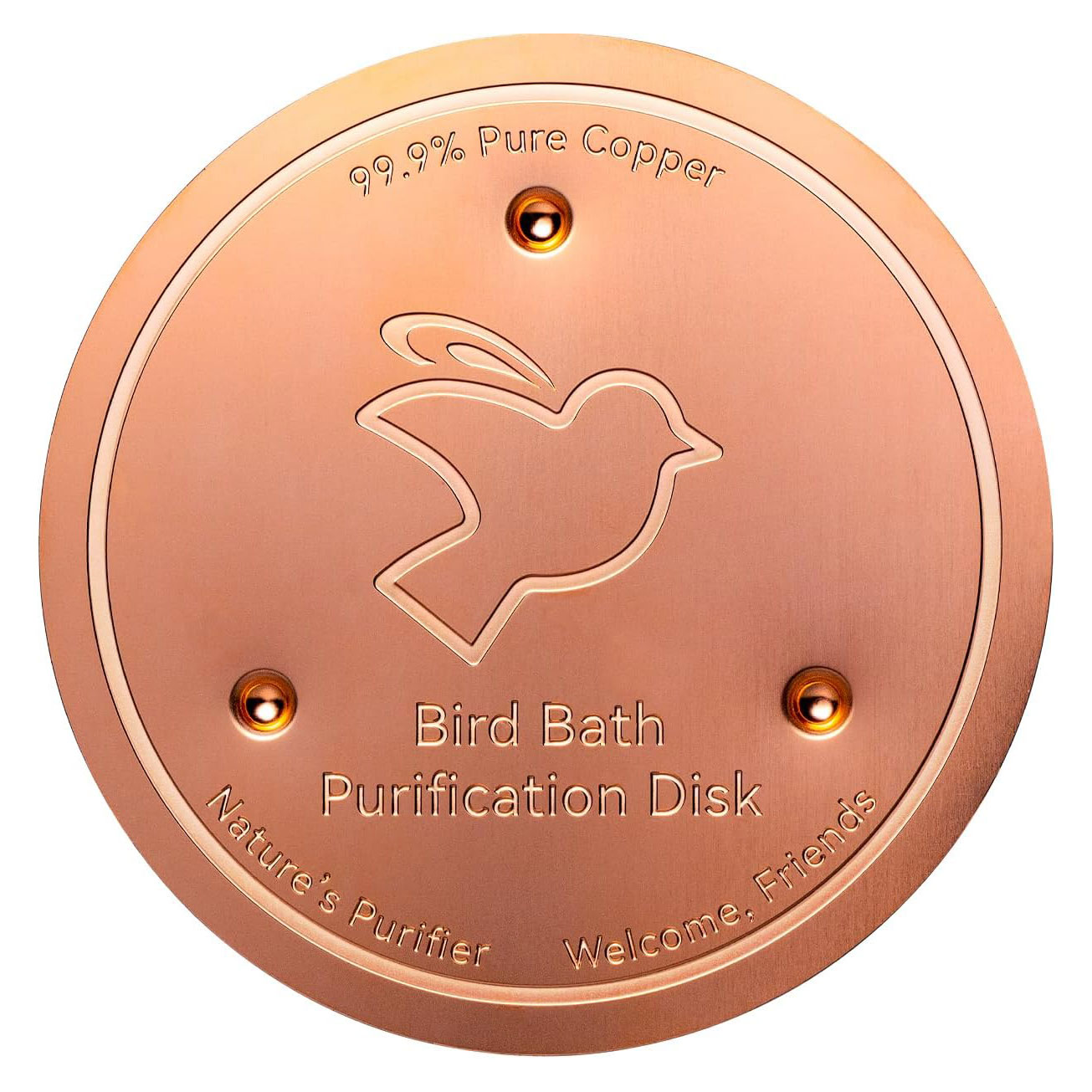
Give your water purification routine a boost with this relatively inexpensive bird bath cleaner. It works in the same way as the copper penny trick, and if you are quick you can take advantage of the Amazon Prime Deal and save yourself a few dollars into the bargain.
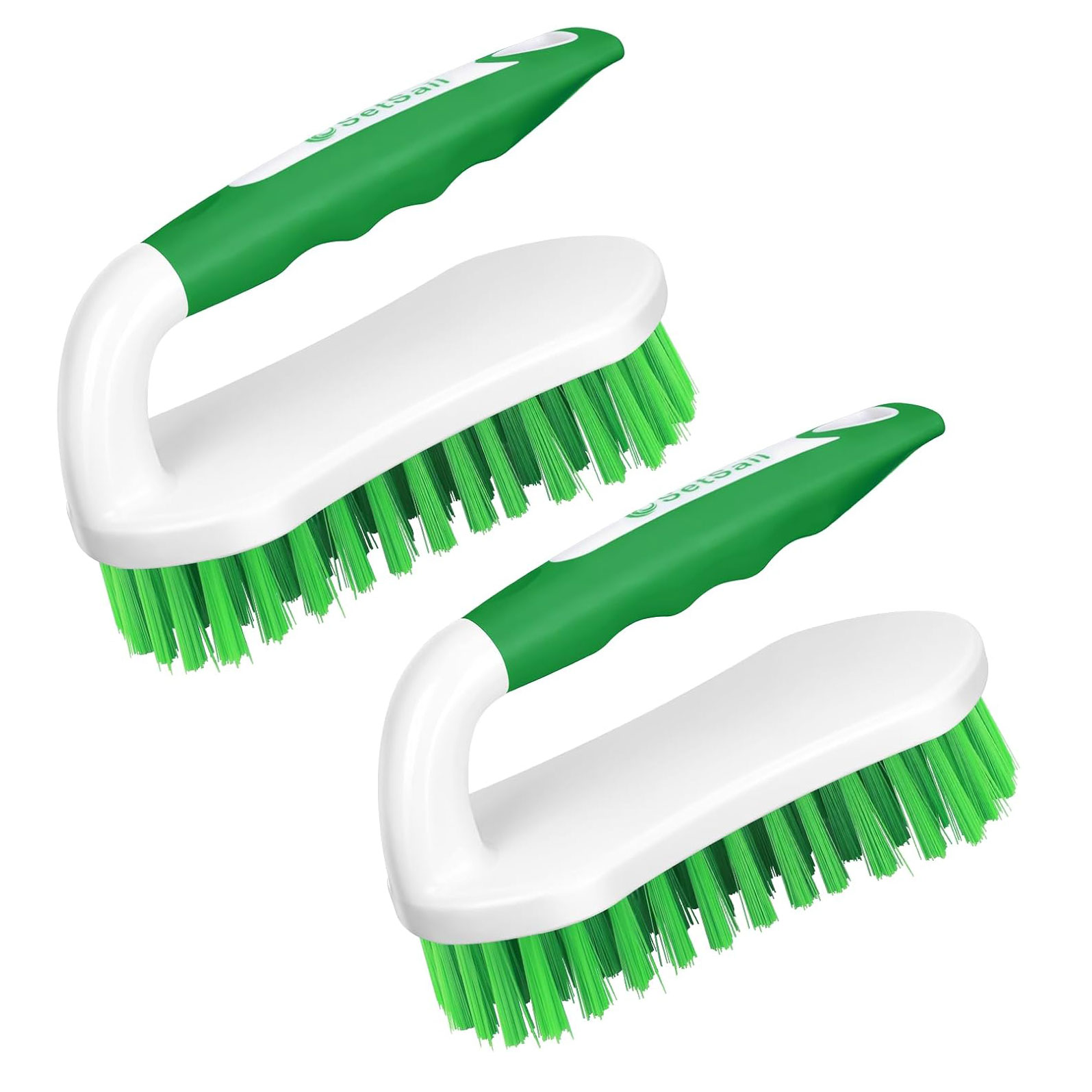
Just because you’ve got your loose change working for you, that doesn’t mean you shouldn’t be brushing regularly. This handy SetSail double act has stiff bristles and a good grip, and the brush's cute curved handle means you can hang it from a bucket or basin when it’s not in use.
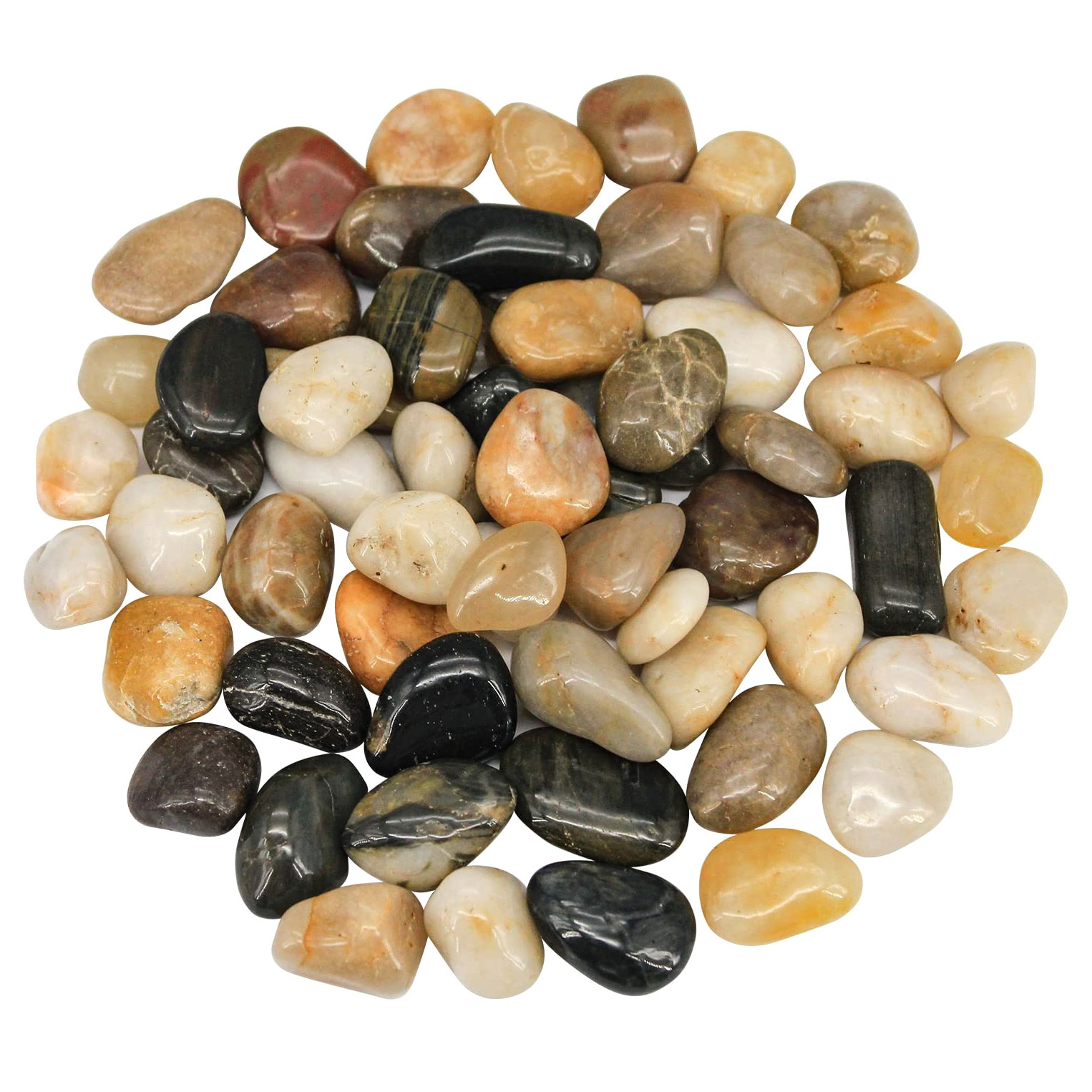
Another important part of bird bath maintenance is making sure birdies are comfortable and safe as they are dipping in and out of the bath. Whether you have a concrete or metal-based bath, these decorative rocks can give bird feet extra support and stability whilst bathing.

Janey is a former assistant editor of the UK’s oldest gardening magazine, Amateur Gardening, where she worked for five years. For the last few years, she has also been writing and editing content for digital gardening brands GardeningEtc and Homes & Gardens. She’s taken part in a range of conservation and rewilding projects for the Royal Horticultural Society (RHS) and the British Trust for Conservation Volunteers (BTCV) as a way of exploring her horticultural horizons. She is currently undertaking her RHS Level 2 certificate in The Principles of Plant Growth and Development.